A Handy Tire Wear Chart, Plus 3 Benefits of Tire Care
When was the last time you took a close look at your tires? And not just the sidewalls (the part of the tire that faces you), but an actual inspection of the treads, which face the pavement? If the answer is “never” or “the last time I had a flat,” then it may be time to check out our tire wear chart so you can spot a safety issue before it becomes a problem.
A properly inflated tire with good treads is a safer tire. According to the National Highway Traffic Safety Administration (NHTSA), worn-out tires are three times more likely to be involved in a crash than tires with sufficient tread depth.1 And, unfortunately, there are nearly 11,000 tire-related crashes each year.2 Keeping a close eye on your tires can not only keep you safe, but also may point to a sign that something else is wrong with your vehicle, like an alignment or suspension issue.
Tire wear chart
Center Wear
Tires may be overinflated—check your owner’s manual for recommended tire pressure and adjust accordingly.
Edge Wear
Tires may be underinflated—check your owner’s manual for recommended tire pressure and adjust accordingly.
Toe Wear
Your vehicle may not be properly aligned—have the alignment checked at a service shop.
Cupping Wear
Your vehicle may have suspension issues, or your tires may be unbalanced—have your suspension checked and tires balanced at a service shop.
Patch Wear
Tires may be out of balance—rotate, align and balance your tires.
Flat Spots
Your vehicle may have brake issues—have your brakes inspected and adjusted at a service shop.
3 benefits of caring for your tires
Safety
Poor tire maintenance—like not having the right amount of air in your tires or forgetting to rotate them—can lead to a flat tire, blowout or the tread coming off your tire.3 Most newer vehicles have tire pressure warning systems that alert drivers to underinflated tires. Safety features like this and keeping a close eye on your tires can help safeguard you and your passengers.
Savings
Next time you’re at the gas pump, you might want to check that your tires have the right amount of air. You may even feel it in your wallet. Properly inflating your tires can save you as much as 11 cents per gallon on fuel.3 Small savings like that can really add up over time.
Longevity
At some point, every car will need a new set of tires. But if you keep a close eye on your tire pressure, you might be able to get a lot more miles out of your wheels. Properly inflated tires can extend the average life of a tire by 4,700 miles.2
How often do my tires need attention?
Most tire maintenance is fairly simple and won’t take up much of your time. But the key is to be consistent and perform checkups on a frequent basis. Here are six things to do over the life span of your tires to keep them in their best shape.
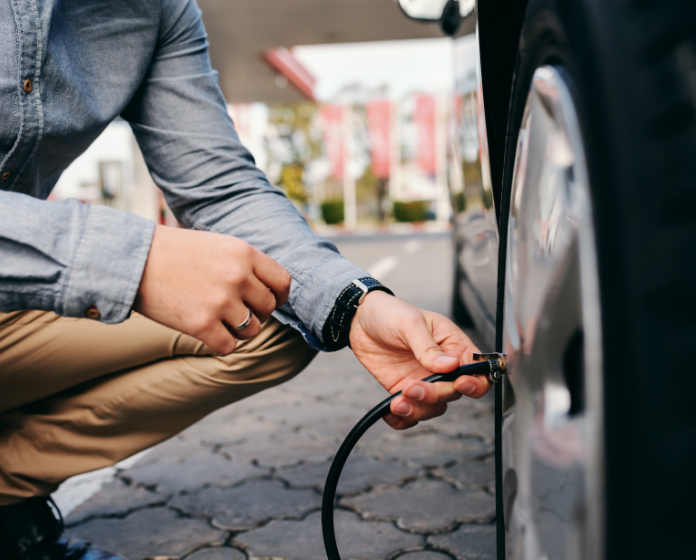
Do this at least once per month:
Check and refill your tires to the proper inflation at least once a month.4 If you’re not sure how much air your tires need, most new cars have a sticker inside the driver’s side door (or check the owner’s manual). And while most new cars have a tire pressure monitoring system (TPMS) to alert you, most only warn you when the pressure is 25% below the recommended level.4
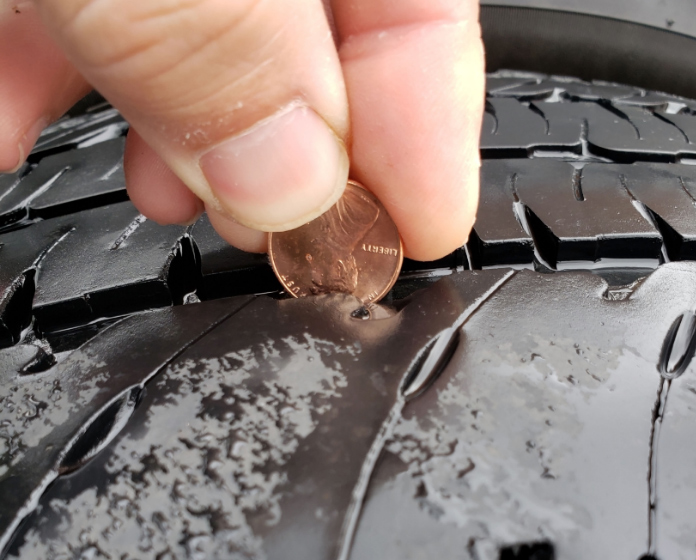
Do this every month:
Check your tire’s tread depth every month to see if they need to be replaced. You can do this with a penny; just insert it into your tire’s tread groove, with Lincoln’s head upside down and facing you.5 If you can see his entire head, then it’s time to shop for new tires. If you bring your car to a dealership for regular maintenance, they will check your tire tread and inform you of any issues. Be sure to specifically ask for your tires to be checked if you take your vehicle to a private mechanic.
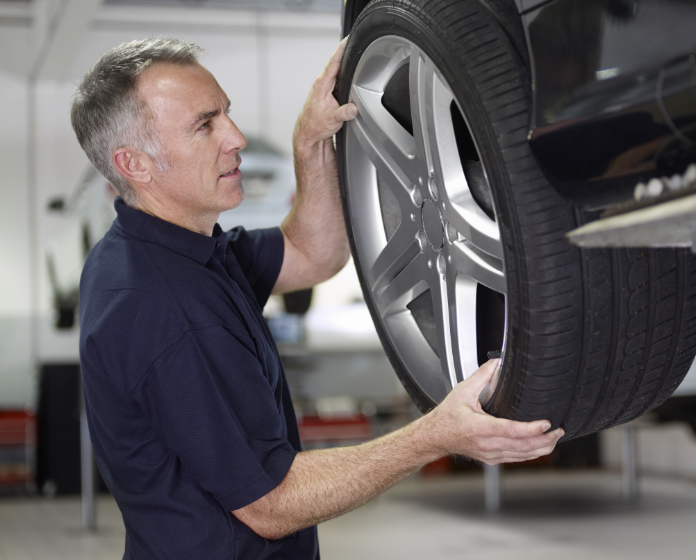
Do this about twice per year (or every 6,000 to 8,000 miles you drive):
Rotate your tires every 6,000 to 8,000 miles or based on your manufacturer’s recommendation.6 This helps your tires wear evenly, which extends their life and performance.
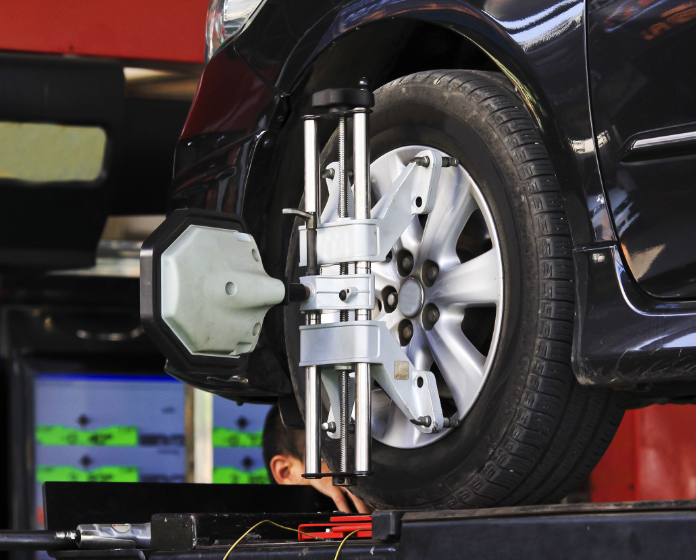
Do this about once per year:
In general, you should get an alignment about once per year.7 An alignment is an adjustment to your suspension that keeps your car from veering from side to side and gives you a smoother ride. If you hit a pothole or object that jars your vehicle, you may need to get your alignment checked.

Do this every three to four years (or every 60,000 miles you drive):
According to the U.S. Tire Manufacturers Association, most new tires on the market will last about 60,000 miles.8 Of course, that means you’ve treated your tires well and followed the other routine maintenance steps listed here to keep them in their best shape! Some tire manufacturers may offer a higher or lower warranty, depending on the type of tire. Check with your manufacturer to be sure.
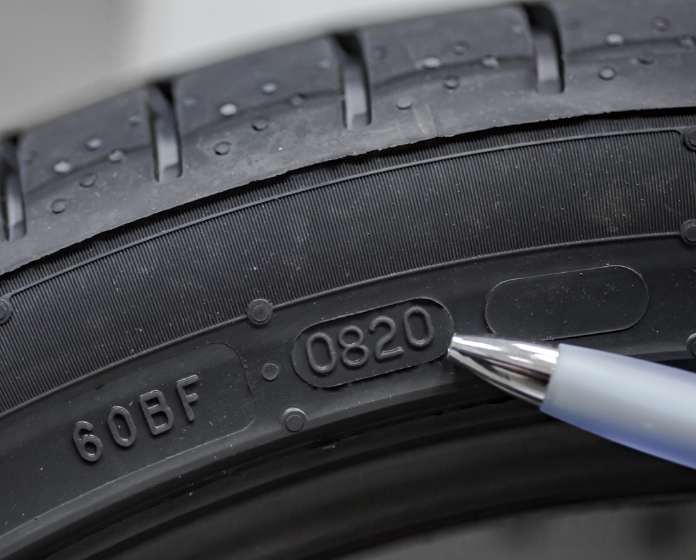
Absolutely do this every 10 years:
After you’ve had your tires for six years, have them professionally inspected every year and replace them after 10 years, no matter how much tread they have left.8 If you’re not sure how old your tires are, you’ll find a code on the sidewall that’ll tell you the week and year the tire was manufactured.9
Tires are just one component of all-around car safety
Keeping your car safe on the road requires paying attention to many aspects of your vehicle, from your headlights to your motor oil, brakes, wipers and more. Be sure to regularly check your vehicle for problems, and bring your car to a licensed mechanic if you suspect something might need further attention.
1 2020 National Tire Safety Week Fact Sheet, U.S. Tire Manufacturers Association, 2020.
2 Always Perform Proper Maintenance, National Highway Traffic Safety Administration, n.d.
3 Tires, National Highway Traffic Safety Administration, n.d.
4 How to Check Your Car’s Tire Pressure and Inflate Tires, Edmunds, 2018.
5 How to Check Tire Tread Depth, Goodyear Auto Service, n.d.
6 Routine Tire Care Tips, Michelin, n.d.
7 Do I Need an Alignment With New Tires?, Firestone Complete Auto Care, 2019.
8 How Long Should a New Set of Tires Last?, Car and Driver, 2017.
9 Shopping for a Used Car? Keep in Mind That Tires Age, and Not Like Fine Wine, Car and Driver, 2017.
Your Policy, Policy Declarations or Amended Declarations in effect on the date of loss is the primary source of reference for your coverage, coverage limits and deductible amounts.
This inclusion of non-Amica companies, products, services or statement herein (“Third-Party Content”) is for general informational purposes only and does not constitute a recommendation or endorsement by Amica Insurance. Policies, views, opinions or positions of Third-Party Content expressed herein are those of the authors and do not necessarily reflect the policies, views, opinions or positions of Amica Insurance. Amica Insurance makes no warranties, expressed or implied, as to the accuracy and reliability of Third-Party Content.
This content may contain helpful tips, explanation and advice. Your use of this information is voluntary and may not be effective in every circumstance. Amica encourages you to use good judgement and put safety first.
For more information on our editorial process and content standard, take a look at our editorial guidelines.